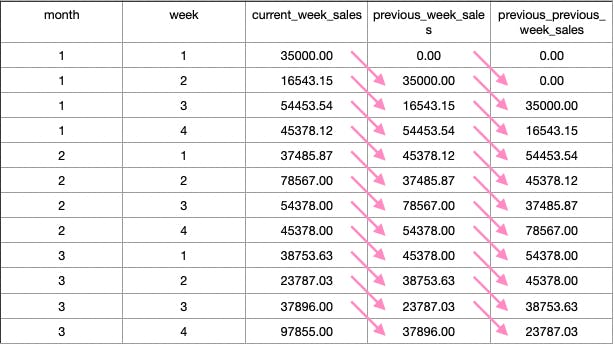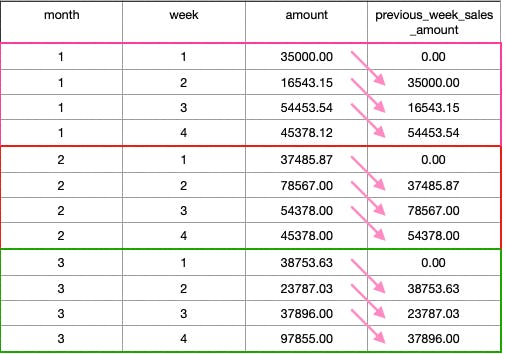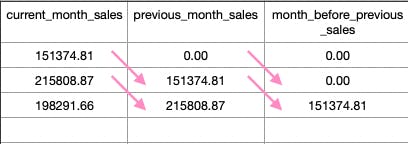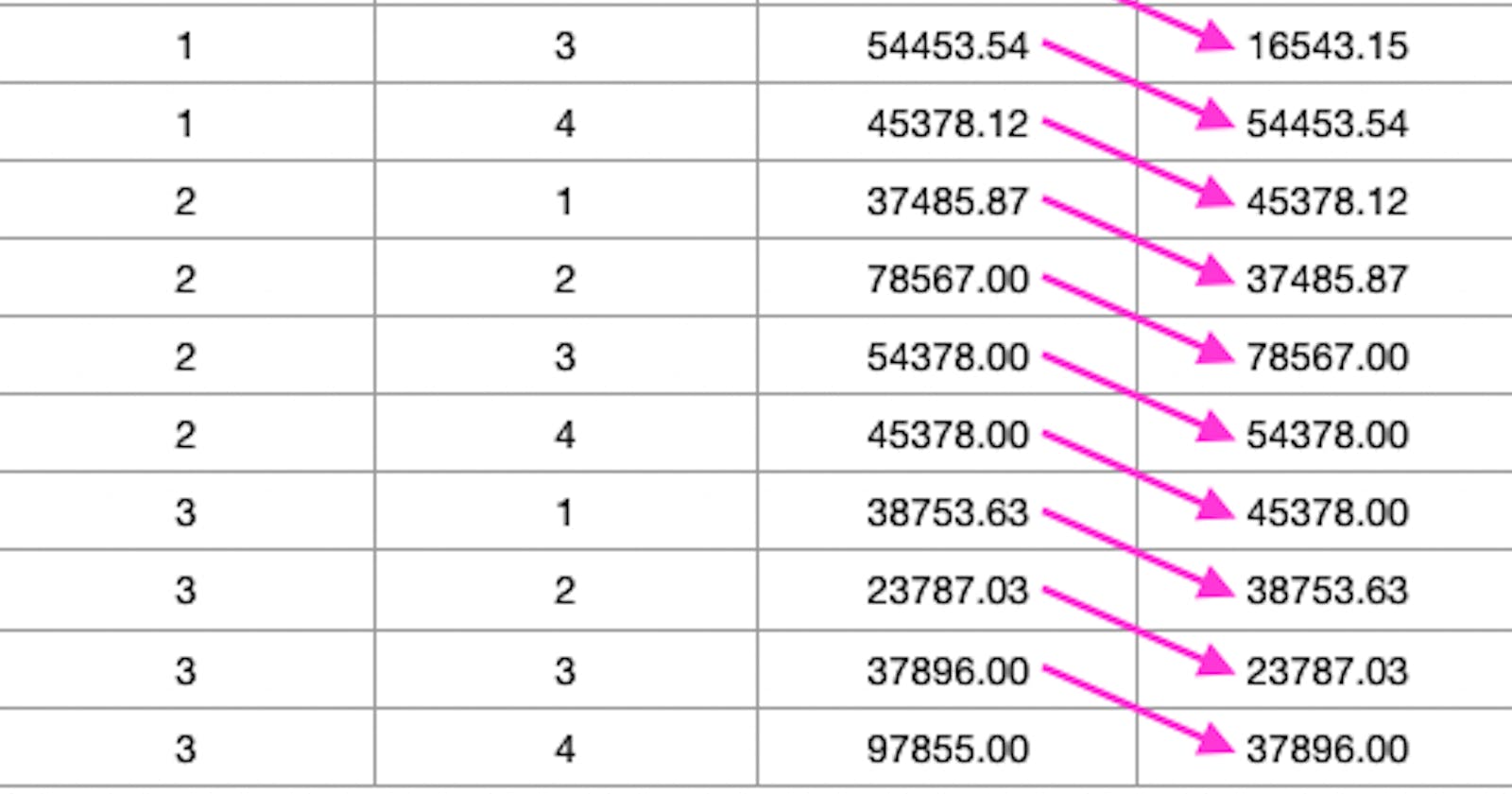In the previous post, we explored SQL Server Lead Window Function and different examples with use cases. Next, in this post, we will be understanding LAG Window Function and its syntax and we will also learn through different examples with use cases. LAG Window Function is also an analytic function and like the LEAD function, it's quite similar to LEAD Window Function. It is to be remembered that analytic functions refer to single rows within the window frame and aggregate functions do the cumulative operation for all the rows in the window frame. The LAG function gives access to the data of the preceding rows or the row at a given offset that is preceding the current row in the same result set without the use of self-join. in layman's term, it gives us access to the data in the previous rows.'
Syntax
Syntax and its explanations are as below, LAG (scalar_expression [, offset] [, default])
OVER ( [ partition_by_clause ] order_by_clause )
scalar_expression: The value to be returned, can be a column name or an expression of any type which returns a single value. It cannot be an analytic function.
offset: It is the value of a number of rows preceding the current row from which the value is to be obtained, the default is 1 if not specified. An offset can be a column, subquery, or expression returning a positive integer and analytic functions are not allowed.
default: it is the value that can be returned when the offset is outside of the scope f the partition. The default value is null if not specified and it has to be of compatible data type as scalar_expression.
partition_clause: it makes the partitioning or grouping of the dataset as per the criteria mentioned in the OVER clause.
order_by: it sorts the data either ascendingly or descendingly before the function is applied. If we mention partition by sub-clause, then it will sort the data set in the partitioning group as per requirement.
Let's prepare a table and dataset for the demonstration.
CREATE TABLE weekly_sales(
month TINYINT,
week TINYINT,
amount DECIMAL(10,2)
);
INSERT INTO weekly_sales(month, week, amount) VALUES
(1, 1, 35000.00),
(1, 2, 16543.15),
(1, 3, 54453.54),
(1, 4, 45378.12),
(2, 1, 37485.87),
(2, 2, 78567.00),
(2, 3, 54378.00),
(2, 4, 45378.00),
(3, 1, 38753.63),
(3, 2, 23787.03),
(3, 3, 37896.00),
(3, 4, 97855.00);
SQL LAG function without a default value
Let's see the simplest implementation of the lag function without a default value.
SELECT
month,
week,
amount,
LAG(amount) OVER(ORDER BY month, week ASC) as lag_amount
FROM weekly_sales;

In the above result set it can be seen that the first row has a NULL value in the lag_amount column as it's not in the window frame and the rest remaining rows have the value of the previous row amount column in its lag_amount column. That is to say, the amount of row 1 is set in the lag_amount column of row 2 and the same pattern follows for all rows.
SQL calculate deltas using the LAG function
The LAG() function can also be useful like the lead function for analytical calculations like the difference between the current week's sales with the previous week's sales, the current week's revenue and the previous week's revenue etc. We will see one example where along with month, week and amount, we wanted to know the previous week's sales amount and also the difference between the current week's sales with the previous week's sales.
SELECT
month,
week,
amount as current_sales,
LAG(amount) OVER(ORDER BY month, week ASC) as previous_week_sales,
amount - LAG(amount) OVER(ORDER BY month, week ASC) as difference_in_sales
FROM weekly_sales;

It shows us the difference between the current week's sales amount and the previous week's sales amount, thus highlighting excess or deficit. These types of data are important for analysis for the stakeholders and decision-makers.
SQL LAG function example with offset and default value
In the first example query, we haven't used the default part and didn't provide the offset value for the lag window function. In this example, we will just modify that query to include both the default part and the offset value to refer to the previous row. Suppose, we need to generate a report showing the weekly sales of the current week, the previous week and the week before the previous week, we can do it as below.
SELECT
month,
week,
amount as current_week_sales,
LAG(amount, 1, 0) OVER(ORDER BY month asc, week asc) as previous_week_sales,
LAG(amount, 2, 0) OVER(ORDER BY month ASC, week ASC) as previous_previous_week_sales
FROM weekly_sales;

Here in the above query, we have mentioned both the offset and default value for the lag function. For getting the previous week's sales amount we provided an offset value of 1 and for getting the week before the previous week's sales amount we provided an offset value of 2. Naturally when the value is not in the scope of the partition then it will return the default value we provided instead of NULL. However, the default value and the scalar value should be of the compatible data type.
SQL LAG function with PARTITION BY and ORDER BY
In all the above examples we didn't provide the PARTITION BY subclause of the OVER clause in the Lag Window Function. So we know if the partition is not provided, it will consider the entire dataset of the query as its window frame. Now we wanted to have the data to analyze for the monthly sales
SELECT
month,
week,
amount,
LAG(amount, 1, 0) OVER(partition by month ORDER BY month ASC, week ASC) as previous_week_sales_amount
FROM weekly_sales;

With the lag function, we provided the offset value and default value, also since we wanted to analyze the data set month-wise we provided the partition by subclause with the month column. This created three partitioning groups namely months 1, 2 and month 3. In that case, the first row's previous_week_sales_amount value is 0 as its previous sales amount is out of the scope of the window frame. Similarly, we can see that for the very first row of the month, the previous_week_sales_amount value is 0 as we had partitioned the row set based on the month.'
SQL LAG function with CTE example
The stakeholders or the decision makers wanted to see the report on a month-to-month basis and don't want granular data for the weekly sales amount, we can achieve the output using the CTE to club/group the sales database on the months and then we can generate a report to show the current month, previous month and the month before the previous month data.
;WITH monthly_sales as (
SELECT
month,
SUM(amount) as monthly_sales_amount
FROM weekly_sales
GROUP BY month
)
SELECT
monthly_sales_amount as current_month_sales,
LAG(monthly_sales_amount, 1, 0) OVER(ORDER BY month) as previous_month_sales,
LAG(monthly_sales_amount, 2, 0) OVER(ORDER BY month) as month_before_previous_sales
FROM monthly_sales;

The above query returns the result sets with the current month's sales, the previous month's sales and the month before the previous month's sales. It returns 0 as the default value in case of NULL as its value is out of the Window Frame.' We can use these analytic functions for the generation of data-rich and complex reports for analysis.
Summary
The LAG function gives access to values of the preceding or previous rows as per the offset mentioned, If not mentioned, then the default offset is 1. PARTITION BY clause sets the local boundary of the data set as per the mentioned specified conditions. If not mentioned, it considers the whole result sets for the boundary. For out-of-the-frame data, the LAG function returns a NULL value like the LEAD function and we can mention the default value if we want it as a third parameter while calling the function.
In the next post, we will be exploring FIRST_VALUE() SQL function.
